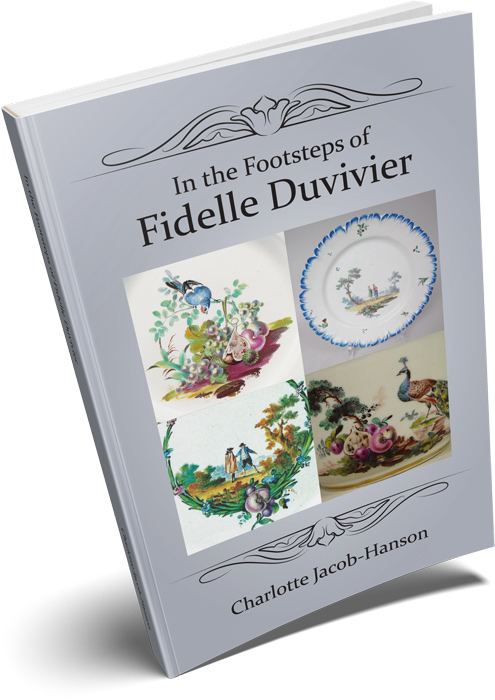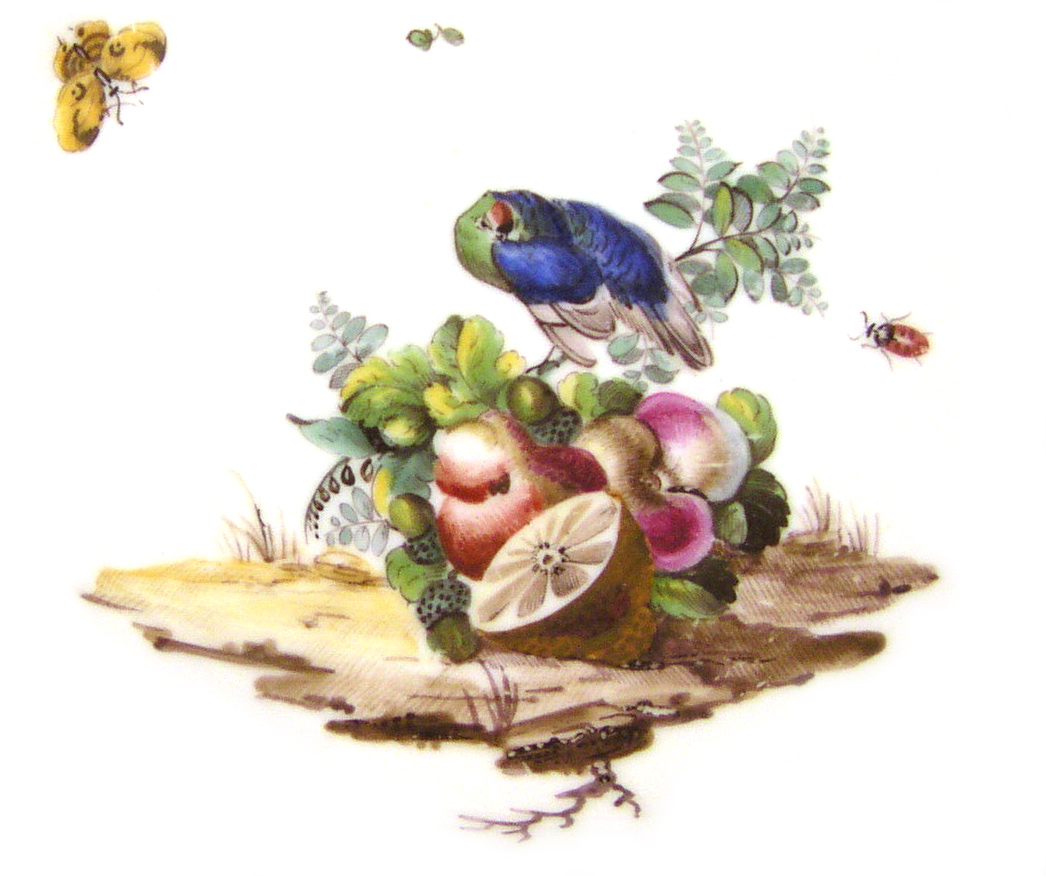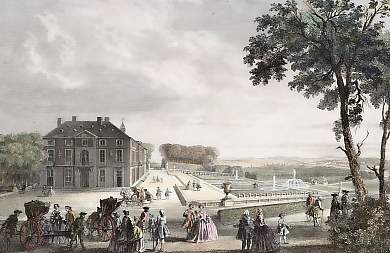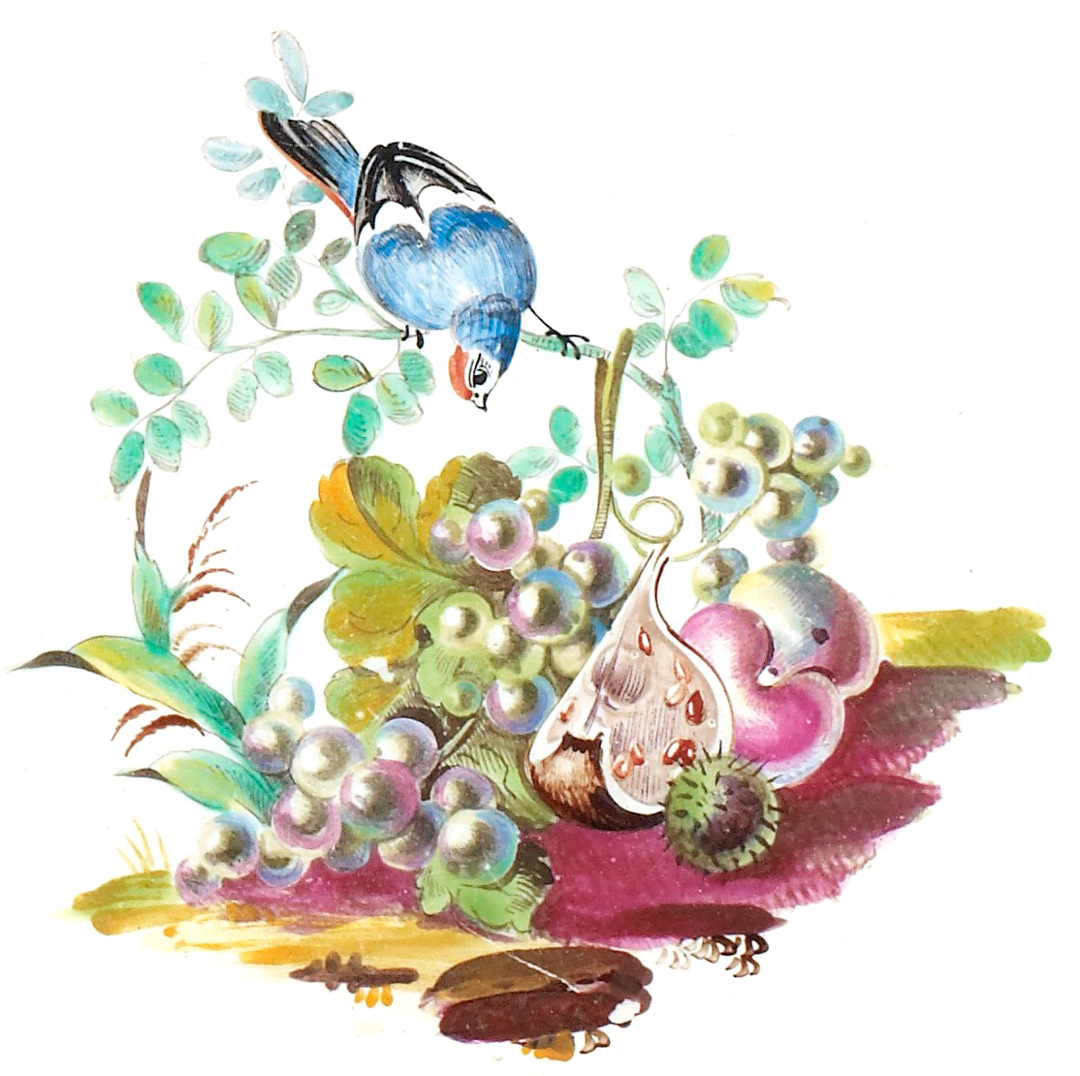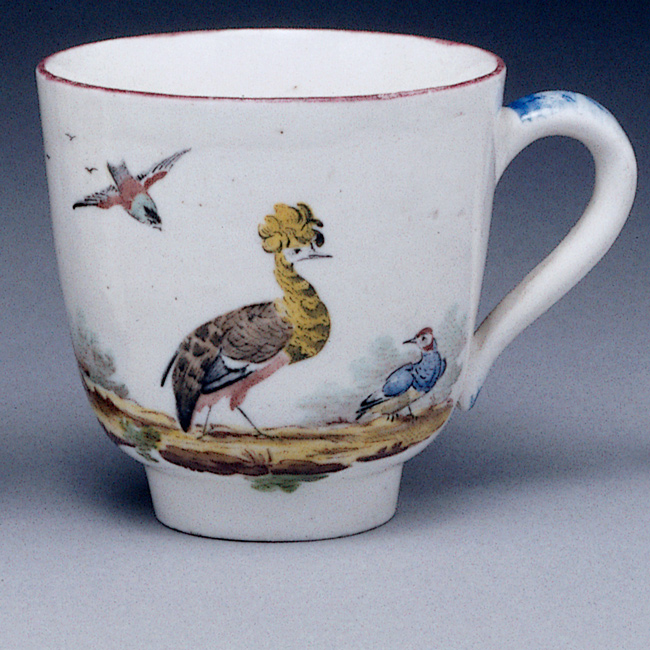Announcing a new publication on the 18th-century ceramics decorator, Fidelle Duvivier:

Today, Duvivier’s name and decorative work are still virtually unknown on the Continent, owing to the fact that his career has received little attention outside of England.


After studying Duvivier’s activity in England, and having subsequently traced his career backwards in time, searching for his work in the Netherlands (at Loosdrecht and for The Hague), the author next concentrated her research efforts in France, where she was able to identify a diverse array of examples showing Duvivier’s decoration on both faience and porcelain (Sceaux and Mennecy).
In addition to the richly illustrated main section of this publication, there are three appendices:
Appendix B contains new genealogical findings (a Duvivier family chart, and details of his first daughter’s birth and baptism in Sceaux).
Appendix C includes historical descriptions of the various manufactories and decorating establishments where Duvivier was employed (Tournai, Derby, James Giles’s London atelier, Loosdrecht, The Hague, New Hall). These summaries should be helpful to readers in other countries for whom these names might be unfamiliar. A bibliography is also included.


More details and a Chronology in the Preface...


Important discoveries in this publication:
- Fidelle Duvivier worked at Sceaux twice (decorating faience and porcelain) – before and after his first stay in England (c. 1769 – c.1773).
- He also decorated blank Mennecy porcelain while working at Sceaux.
- There are correlations between his work at Sceaux and some decoration on early Derby, Chelsea-Derby and later on New Hall porcelain.
- He was the painter of the Worcester porcelain “Grubbe plate” with the dead game (in the Victoria and Albert Museum, London). This plate has been loosely attributed to him for years, but with no clear proof. The discovered print source is shown and other arguments are made in support of this attribution.
- A number of his motifs on Loosdrecht porcelain appear later on New Hall porcelain decorated with related subjects.
- Duvivier decorated more porcelain at Loosdrecht than at any other manufactory, including New Hall.


